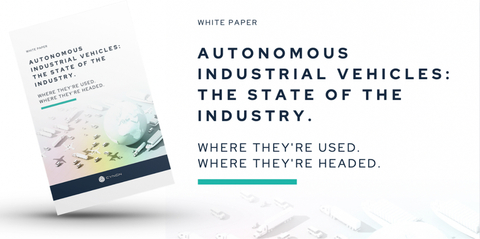Cyngn Releases White Paper Examining the State of Autonomous Industrial Vehicles and the Market’s Future Growth Potential
Cyngn Inc. (NASDAQ: CYN) has released a white paper highlighting the critical role of automation across various industries. The report outlines that the industrial automation market is projected to exceed
- Industrial automation market expected to reach $306.2 billion by 2027.
- Automation has demonstrated a 48% productivity increase and a 42% decrease in operating costs in some industries.
- Autonomous vehicles were among the top 5 capital expenditures in key sectors in 2021.
- None.

Following two decades of research, development, and beta testing, autonomous industrial vehicles have grown beyond their startup phase and have risen to become an industry necessity at dizzying speeds. Industries ranging from manufacturing to mining, construction, agriculture, and dairy are using autonomous vehicles to change the way they operate.
The implementation of autonomy yields key benefits with immediate results, such as increasing profitability, scalability, adaptability, and safety — such that early adopters are carving out a competitive advantage and setting new industry process standards.
In this industry report,
Key Takeaways:
-
Automation Is Growing- According to research by
Meticulous Market Research, Inc. , the Industrial Automation Market is expected to reach$306.2 billion -
Automation Is Working- According to a recent report from
Sapio Research , in some industries, industrial automation has been shown to increase productivity by48% , and decrease operating costs by42% . - Automation Is Already Here- Autonomous vehicles, automation, and robotics represented 3 of the top 5 capital expenditures in key industries in 2021.
DOWNLOAD THE FULL REPORT HERE.
About
To learn more, please visit https://cyngn.com/.
Find
Forward-Looking Statements
This press release contains forward-looking statements within the meaning of the Private Securities Litigation Reform Act of 1995, Section 27A of the Securities Act of 1933, as amended, and Section 21E of the Securities Exchange Act of 1934, as amended. Any statement that is not historical in nature is a forward-looking statement and may be identified by the use of words and phrases such as "expects," "anticipates," "believes," "will," "will likely result," "will continue," "plans to," "potential," "promising," and similar expressions. These statements are based on management's current expectations and beliefs and are subject to a number of risks, uncertainties and assumptions that could cause actual results to differ materially from those described in the forward-looking statements, including the risk factors described from time to time in the Company’s reports to the
View source version on businesswire.com: https://www.businesswire.com/news/home/20220818005273/en/
Vice President, The Equity Group
csohn@equityny.com
(415) 568-2255
Source:







